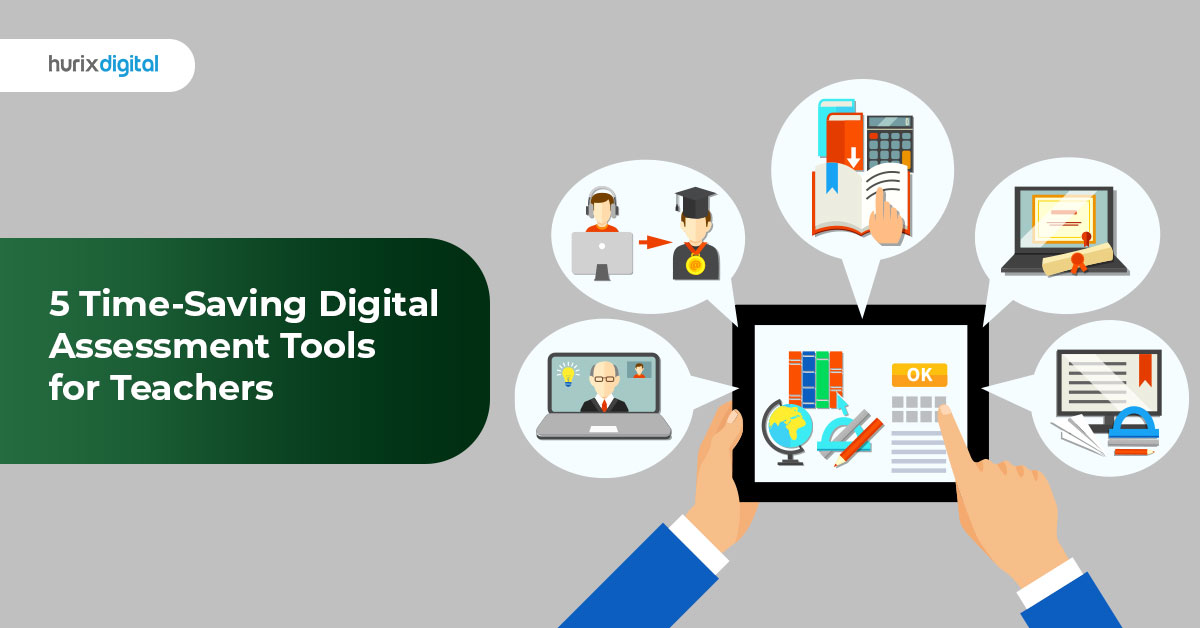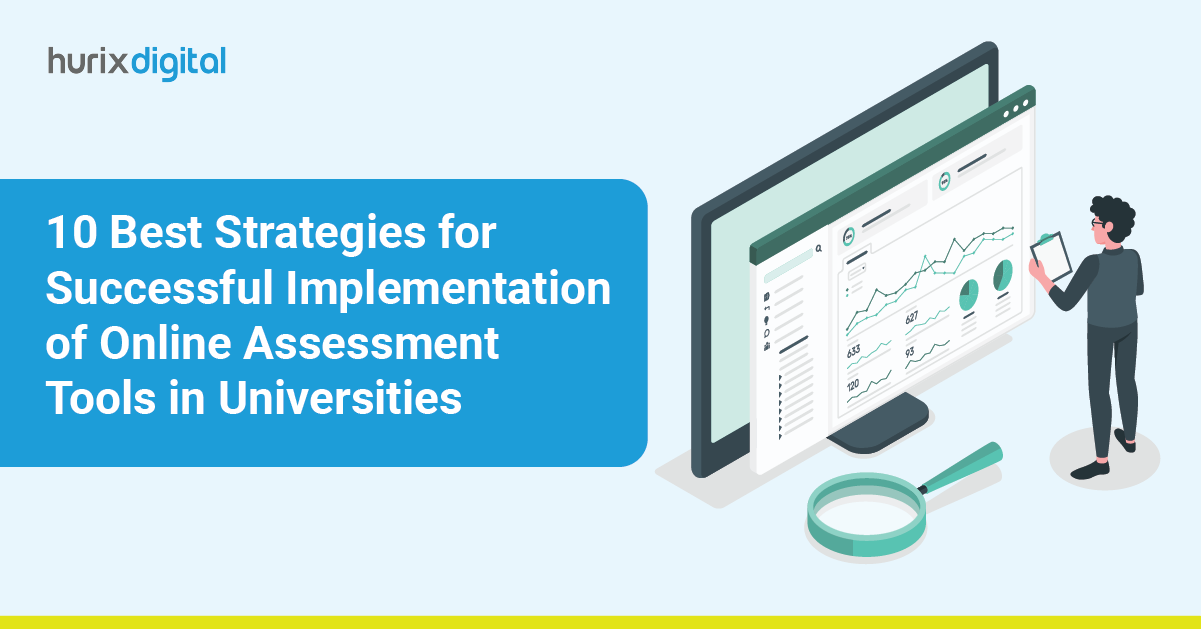
5 Time-Saving Digital Assessment Tools for Teachers
Online learning is no longer an emerging phenomenon that students have to look out for.
The number of global online learners has grown from 300,000 to a whopping 220 million in the past decade alone. Academic bodies worldwide are reaping the benefits of online education.
The phenomenon helps management, students, and teachers. One major assistance this trend has provided educators with is digital assessment tools for teachers.
Teachers can use them to make the learning curve interactive and perfect a particular course or module. Since they also help teachers fetch real-time reviews, it has become imperative for teachers to implement them.
However, with the market being inundated with online assessment tools in teaching, which should teachers use? Let’s find out.
Table of Contents:
- Top Benefits of Digital Assessment Tools
- Best Online Assessment Tools in Education for Teachers
- In Conclusion
Top Benefits of Digital Assessment Tools
The advantages of online assessment in education are not restricted to merely designing a curriculum. Modern assessment tools can facilitate an entirely fresh learning experience.
Want to know how? Here are some ways how an online assessment tool can assist both students and teachers:
1. Saves Time
With online assessment tools, teachers can easily save time instead of using the standard paper-based method. The tools can be used to create the assessments, distribute them among students, and even grade them.
Many online assessment tools can automatically grade multiple-choice, true/false, and other objective questions, freeing up teachers’ time for more meaningful interactions with students.
Students receive immediate feedback on their assessments, allowing them to identify areas for improvement and adjust their learning plans.
2. Customized Learning
One of the best advantages of online assessment tools is their personalization. Teachers can customize the tools based on each student’s strengths and weaknesses, giving each learner a tailored teaching approach for better results.
Some online tools can adapt the difficulty of questions based on student performance, providing a personalized and effective learning experience. They can also provide specific feedback on students’ errors, helping them understand their misconceptions and improve their understanding.
Also Read: 10 Types of Formative Assessment Tools for Your Classroom
3. Better Accuracy
Integrating online assessment tools in education equals better accuracy. It eliminates the chances of errors caused by human intervention and removes any threat of biased grading, keeping the process as objective as possible.
Online tools can provide detailed data on student performance, helping teachers identify trends and areas for improvement in their instruction. Online assessment tools minimize the risk of errors that can occur during manual grading, such as miscalculations or misinterpretations.
4. Interactive Learning
Making learning interactive is a huge advantage. With online assessment tools in teaching, educators can integrate multimedia, such as images and videos, to enhance the learning curve.
Digital assessment tools for teachers can incorporate a variety of multimedia elements, such as images, videos, audio clips, and animations, to make them more engaging and informative. They can also be designed to connect with real-world scenarios and applications, making learning more relevant and meaningful for students.
5. Flexibility and Promptness
Teachers can use online assessment tools to share reviews remotely. This flexibility is expanded in the self-assessment and feedback arena as well. With such tools, teachers can easily update learners’ records while maintaining real-time performance feedback.
Every teacher must analyze the assessment tools’ advantages and disadvantages before using them. In most cases, the tools will deliver better efficiency and results. Students can use online tools to self-assess their understanding and receive immediate feedback on their performance. Teachers can monitor student progress in real-time, allowing them to identify areas where students may be struggling and provide targeted support.
Now that you understand why these tools are crucial let’s help you find the most useful ones.
Best Online Assessment Tools in Education for Teachers
1. Hurix Digital
Hurix Digital offers digital assessment tools for teachers to help them deliver comprehensive assessments.
It is specifically crafted for K12 classrooms, higher education systems, and corporate training providers. It supports multiple question types, including multiple-choice, short-answer, and true or false questions.
Educators can prepare quick questions to deliver instant feedback or comprehensive questions for an in-depth understanding. It also boasts real-time analytics, allowing teachers to track students’ performance and progress efficiently.
The platform excels in delivering customizable options that can cater to any student group. Ever since the pandemic, more students have tended to opt for online education every year. Moreover, over 98% of higher education institutes have had to move their learning model online.
Since every learner prefers different learning patterns, it becomes crucial to offer them a personalized experience. This is where Hurix comes in with its dedicated customized solutions that can be catered to a diverse audience globally.
2. Poll Everywhere
Poll Everywhere is considered one of the best online assessment tools in teaching. The web-based tool allows teachers to design live quizzes, surveys, and polls.
This can establish an interactive learning environment that effectively engages students. It is ideal for question types such as open-ended, rating scales, and multiple-choice.
An advantage of using Poll Everywhere is its device support. Students can access the tool on laptops, tablets, and smartphones alike. Like premium online assessment tools, Poll Everywhere can be integrated with multiple LMSs (learning management systems), including Google Slides and PowerPoint.
3. Nearpod
Designed as an interactive and user-centric tool, Nearpod offers the top benefits of digital assessment tools. The tool facilitates flexibility with personalized assessments that can be prepared and shared in real time. Nearpod also offers features like formative assessments and real-time feedback, making it a valuable tool for personalized learning.
It also supports audio clips, videos, and images to help with information retention. Moreover, the tool comes with gamification features, like polls and quizzes. With real-time data, it creates the perfect teaching space, helping teachers improve their strategies accordingly.
4. Moodle
Moodle is also one of the best online assessment tools in teaching with highly reliable services. It is a portal for standard assignments, making it ideal for beginners and traditionalists.
With Moodle, students can directly upload their written work or documents. These documents are available for download for teachers.
Once graded, teachers can reupload the assignments with feedback. The tool eliminates the need for paper handling, correction pages, and unnecessary scrolling.
5. Formative
Formative stands out from other online assessment tools by catering to modern teachers. It facilitates a virtual whiteboard that can be used collaboratively.
In addition, it can be used to make instructional videos. Its visual and audio assessment features are ideal for presentation and language classes. In fact, 75% of educators see videos as more effective than text-based content.
The tool can be used to leave feedback on the papers for better instruction. The “Copy and paste identifier” is a key feature in Formative that alerts teachers if the students have directly pasted a section from another source. This eliminates plagiarism, allowing for a unique learning process.
Also Read: The Power of Human Touch & AI in Making Successful Assessments
In Conclusion
A major reason behind the popularity of digital assessment tools for teachers is growing digitization. 79% of teachers have started using online learning. The trend is understandable, seeing the numerous benefits of digital assessment tools.
Integrating online assessment tools in education can make learning experiences fun and interactive. The five assessment tools in teaching discussed are just a few examples of the many options available to teachers. By exploring and experimenting with different tools, you can find the best ones to suit your teaching style and the needs of your students.
Its value is equal to teachers and students, making it an absolute winner in most cases. At Hurix Digital, we also design the best learning experiences with digital assessment tools. Get a custom-built assessment solution that caters to your learners.
Want to know more about assessment tools in teaching? Contact Hurix Digital today to learn more and elevate your learning models.

Performance, Results, Growth, and Life-Long Learning define my professional life. I am passionate about making workplace learning planful, purposeful, and impactful. I take pride in partnering with clients and bringing them the best in learning design and creating solutions that address business challenges.





